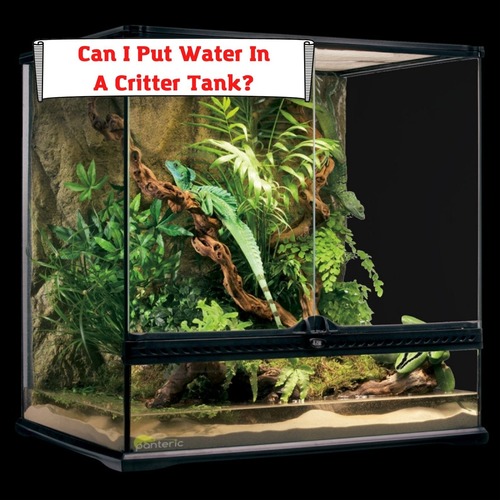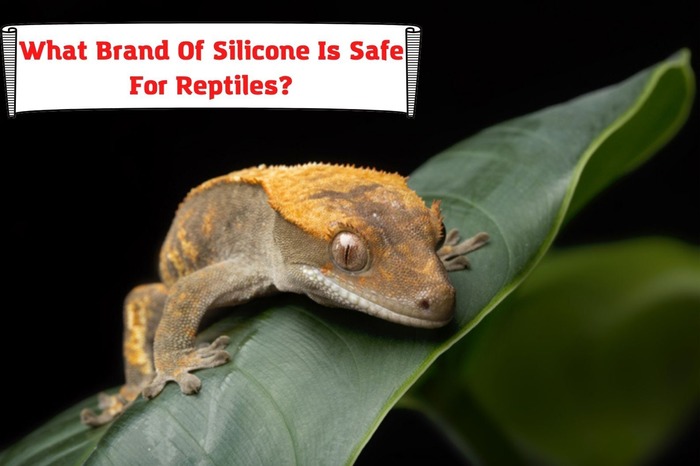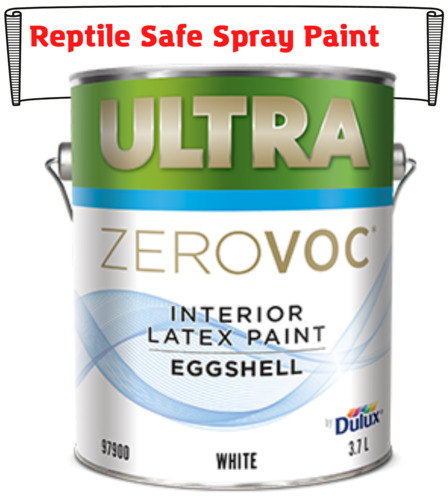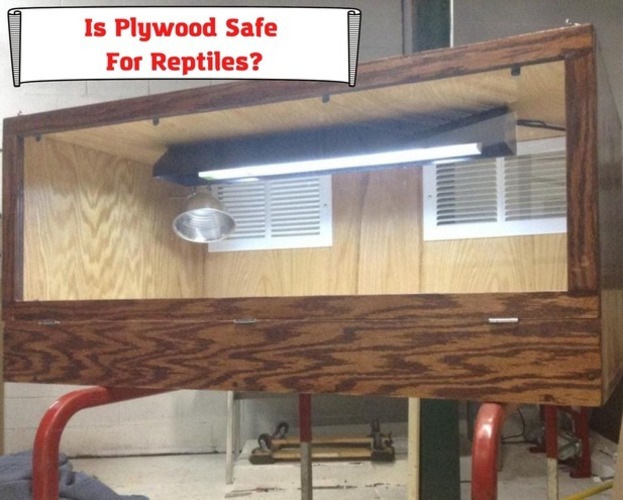Red-eyed tree frogs, like many other frogs, are delicate critters. Their delicate nature adds to the responsibility of their owners to ensure that expensive mistakes are not made in the construction of their paludaria.
Are you looking forward to building a dream home for your Red-eyed tree frog?
Here are the main things to consider when building if you want to avoid expensive and life-threatening mistakes.
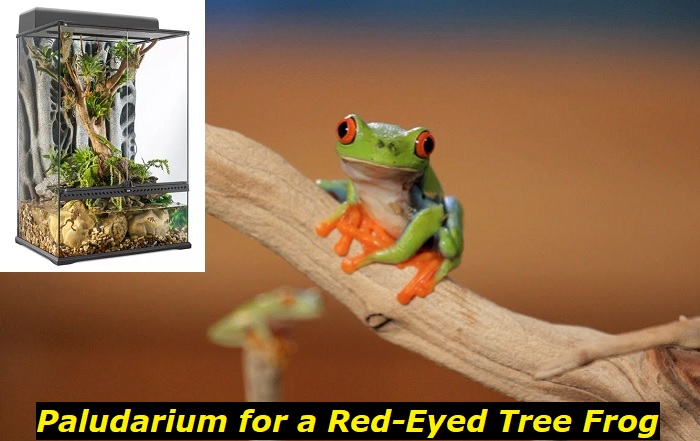
Understanding Why a Palaudarium is Necessary
Many Red-eyed tree frog owners usually use a vivarium, and they keep the frog in this vivarium enclosure. While this may pass for work sometime, and with some important systems in the vivarium, the appropriate type of enclosure to keep your pet in is a paludarium.
A paludarium differs from many other types of enclosures for reptiles and amphibians as it best caters to the needs of your Red-eyed tree frog. It is ahead of a vivarium. While a vivarium incorporates mostly land and animals, a paludarium incorporates land and water in the enclosure to mimic the natural environment of the critter.
Here are the main things to consider when building a paludarium for your pet:
Water Quality
Frogs can generally adapt to a wide range of environments. But their porous and extremely sensitive skin makes it challenging to subject them to just any kind of environment. This is particularly true when considering the water quality of your paludarium.
The recommended pH level of the water in your paludarium is 7. It is best to leave the water pH at a stable neutral level. But you can also leave it within the range of 6.5 – 7.5.
Also, it would be unwise to use tap water in the paludarium. Tap water usually contains chlorine, chloramines, and many other chemicals which your city council may have added to make the water safe for human use. But these chemicals will make the water toxic to your pet.
It will irritate your pet’s skin, impair its respiratory functions, cause severe health challenges and even lead to death.
Many Red-eyed frog owners prefer to use distilled water since the chances of any foreign and harmful compound are eliminated. This can also work for you, but you want to reintroduce the essential minerals into the water before using it in your paludarium.
Alternatively, you can also boil the tap water and let it cool to make it safe for use before using it in the paludarium.
Tip:
Suppose you use bottled or distilled water or have a reverse osmosis system in your setup for filtering water. In that case, you must reintroduce beneficial minerals such as magnesium sulfate and calcium chloride. This will make the water safe for your frogs.
You also want to test the water frequently, especially from October to early March, since this is when you can begin to expect your frog to spawn. Tadpoles start as aquatic animals before maturing into frogs. So for the first few weeks of their lives, they will depend on the dissolved oxygen in the water for survival.
If the water quality is not conducive enough for them to survive in it, you are likely to lose all your tadpoles due to the bad water condition.
Drainage
Drainage is very crucial to maintaining an excellent paludarium. Drainage is not usually a feature in many other enclosure types because the enclosure is usually fully dry. But this is not the same with a paludarium because it contains both dry land and water.
The usual practice is to have only one drainage system at the bottom of the tank. The drain outlet will usually be deep in the water on the lower end of the bottom slope. Many pre-manufactured tanks usually have one.
You can first arrange some of your bigger natural rocks to hold the smaller pieces leading up to the dry land. But more importantly, it would be best to install a bio drainage mesh to catch and keep beneficial bacteria that will aid the filtration of the water.
This will ensure that some beneficial bacteria remain in the paludarium to continue the natural filtration process when you change the water.
Decorations and Substrate
The decoration is perhaps one of the main concerns in any kind of enclosure. The choice to either use live rocks or artificial alternatives are always present before the pet owner.
Live rocks may seem like the best choice for your Red-eyed tree frog for many reasons. Some of them include the chances of beneficial hitchhikers for the sustenance of the ecosystem in the biodiversity. These hitchhikers could also become frog food in the paludarium.
Another reason you may want to use live rocks in the enclosure is that it is natural. But there are some downsides you need to be aware of.
The first is the weight of live rocks. You want to consider the weight of the rocks you are using to set up the paludarium.
If the rocks are too heavy, you risk breaking or damaging your paludarium, especially if you use a glass enclosure.
You also want to come to the reality that while live rocks will help keep your enclosure in place by contributing to the balance of the enclosure, they cannot hang mid-way on the walls of the enclosure like artificial rocks from spray foam will. So you have limited use for live rocks.
Some pet owners also prefer to use artificial alternatives. One excellent product they use is spray foams or insulation foams. Spray foam is very versatile for making light fake rock. The rocks will stay attached to the walls of your enclosure, and the weight will not put your enclosure at any risk of damage.
Another very important piece of decoration you must take into consideration when building your paludarium is tree branches. It is unrealistic to have big tree branches in a relatively small paludarium. But you must improvise with smaller twigs.
This is important to mimic the natural habitat of the Red-eyed tree frog. Although red-eyed tree frogs usually live in groups around swamps and ponds, they are largely arboreal animals. They spend their time jumping from one twig or branch to the other and hardly touch the ground.
So it is necessary to ensure that your paludarium features a few twigs or branches to help them exhibit their natural behaviors. You can hold these branches in place with spray foam or safe sealants and glue since they will not be immersed in the water but stay on the dry land area.
Tip:
You can maximize the benefits of live rocks and artificial rocks by featuring both in their paludarium. You can use a mixture of big and smaller live rocks to hold the balance of the entire enclosure while you also create a comfortable spot for resting far from the water with the artificial rocks.
The spray foam or insulation foam you use in making the artificial rock can also act as a support to suspend the wood branches away from the bottom of the tank. This is a great way to improve your mini biome’s natural appearance.
Plants and Water
Apart from resting under large leaves during the day, it is a major characteristic of the Red eye tree frog to lay eggs on the underside of big leaves that are very close to a water body.
This is essential because the fluid inside the eggs washes them into the water upon hatching. The implication is that you must ensure that you have plants in the paludarium very close to the water to aid the reproduction process.
You also want to ensure that the water quality is optimal. Usually, the female Red eye tree frogs have to move to get water because it is vital that they stay hydrated during the egg-laying period for the eggs to have the necessary amount of fluids to survive.
It is also important that the drainage system is not opened during the egg-laying period so that the eggs are not flushed out of the paludarium.
Using Paints, Glues, and Sealants
Red-eyed tree frogs are delicate critters. They carry out respiration in the adult stage through their skin and lungs. Their skins are very slim, and they contain several blood capillaries that help in the exchange of gas, especially when they are in the water.
They also breathe with their nostrils.
This makes it vital to pay attention to the nature of the glues, sealants, and paints you use to secure or color the spray foam. Using water-based acrylic paint for the rocks, you make with spray or insulation foam would be best.
Acrylic paints are moisture resistant, but most importantly, they do not constitute any harm to your reptiles. They are usually free of harmful chemicals that oil-based paints contain.
Under no circumstance must you use any oil-based paint or finish product in the paludarium. Oil-based paints usually contain a lot of volatile organic compounds, making every level of the mini-biome unsafe for your red-eyed tree frog.
They essentially emit odors that can affect your pet’s respiration and lead to severe health issues, including death. Use only environmentally friendly sealants, paints, and glues.
Note: You can go the extra mile to ensure that your pet is safe by waiting a few hours or days for the finish products you used in the paludarium to fully cure before introducing your pet into it. This will ensure that whatever odor, no matter how low it may be, is eliminated before your frogs come into the enclosure.
- Dubia Roach Egg Sack: How To Understand if It’s Healthy? - January 2, 2023
- How To Feed African Dwarf Frog While on Vacation? - December 26, 2022
- Baytril for Bearded Dragon: Here’s What You Should Know - December 19, 2022
